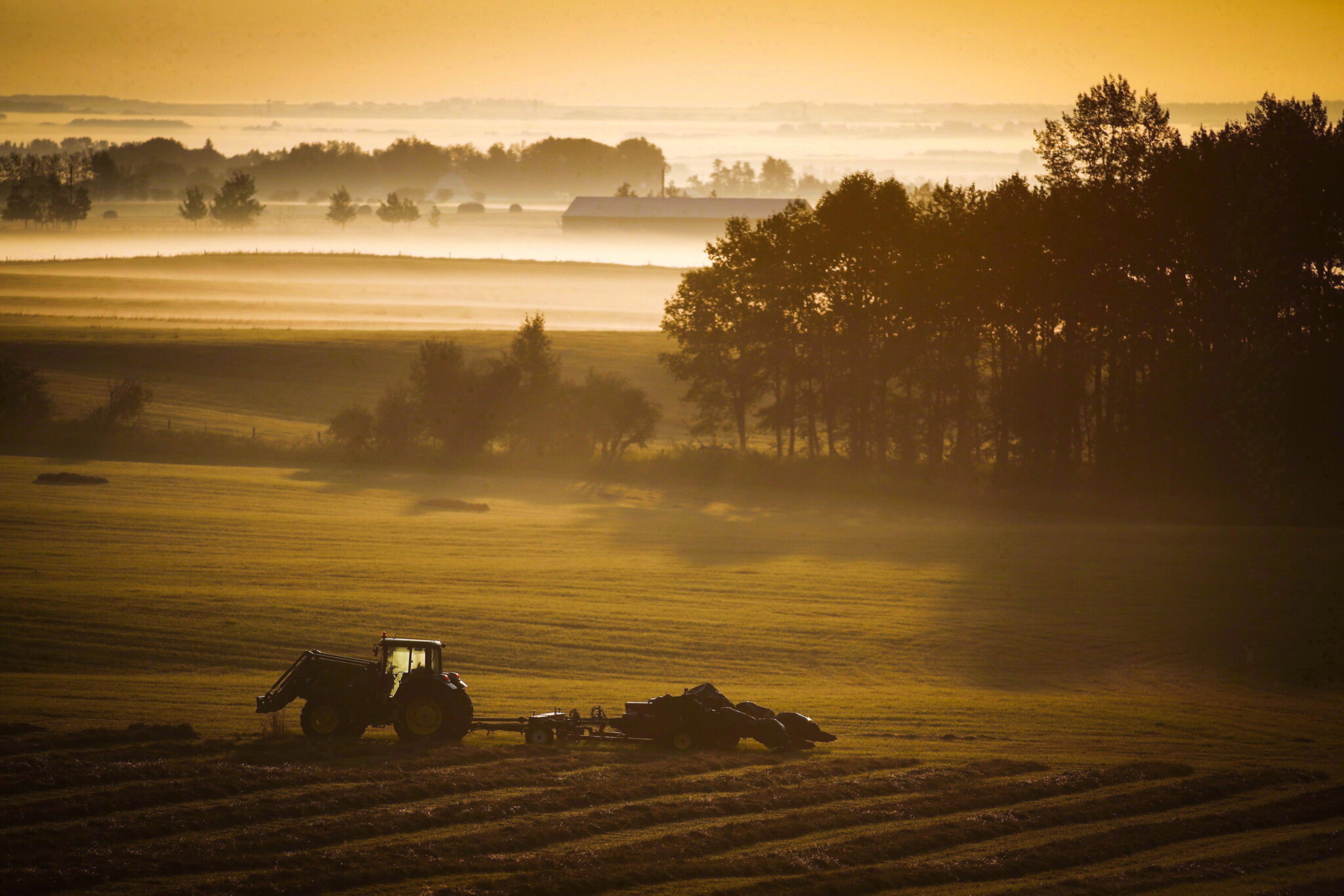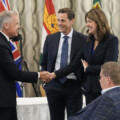
A majority of Canadians think that Canada is broken after years of stagnant incomes, affordability challenges, rising crime, government failures on basic functions like healthcare and immigration, and a deepening cultural malaise. But decline is a choice, and better public policies are needed to overcome Canada’s many challenges. Kickstart Canada brings together leading voices in academia, think tanks, and business to lay out an optimistic vision for Canada’s future, providing the policy ideas that governments need to ensure a bright future for all Canadians.
The prevailing wisdom assumes that the next federal election will be fought and won on pocketbook issues, not the environment. But when insurance costs rise with the flood waters, and people’s lives and businesses are disrupted by the flames of wildfire, we are reminded of the deep cultural and economic relationship Canadians have with nature. Canada prides itself as being both a resource-based economic powerhouse and a responsible steward of the greatest natural endowment on the planet. But if we want our communities to thrive, conserving and maximizing the value of our natural wealth is an imperative.
Yet decades of political polarization have stymied progress on environment-economy issues. Canadians have lost faith in potential solutions and in Canada’s ability to deliver on them. So how do we get past polarization to make real headway on problems like biodiversity loss, climate pollution, and waste? How, in short, do we find a middle ground?
First, we must design solutions with multiple, tangible benefits for Canadians’ livelihoods, well-being, and economic security. Second, we need to reframe the political debate. It’s not a question of “if” we need to act on these issues, but rather “how” we act in the best possible way.
There is a critical space for policymakers of every political persuasion in that conversation. Nature is an issue that unites Canadians’ interests; we must stop allowing it to divide us. The fact is, many environmental-economic opportunities align strongly with what many would consider the broad middle of Canadian politics. That’s because many of these solutions focus on (1) market-based approaches (2) removing barriers to innovation, and (3) partnership over central planning.
Nature is a central Canadian value
In the lead up to the 2011 election, off the back of the global financial crisis, and as the federal Conservatives criticized the “job killing carbon tax”, Reform Party founder and former leader Preston Manning put forward a bold vision for conservative environmentalism.
“Conservation and conservatism come from the same root,” he wrote. “[L]iving within our means ecologically is a logical extension of living within our means fiscally, and…markets can be effectively harnessed to environmental conservation.
An impetus for Manning’s appeal was a 2010 poll that revealed that Conservative values increasingly resonated with “middle-of-the-road” voters, with one major exception: environmental protection. There was a sense among many of these voters that the Conservative Party needed to go beyond criticizing the other parties’ climate policies and put forward a strong environmental plan of its own.
For many of the same reasons, Manning’s words bear relevance today. Recent polling by Abacus Data shows that the vast majority of Canadian voters (81 percent) think a Conservative government should deal with climate change seriously. However, very few (seven percent) actually think they definitely will.
Another recent Abacus poll, commissioned by Generate Canada, shows that an overwhelming majority of Canadians (78 percent)—including 79 percent of Conservative voters—believe that the well-being of their community, economy, and their local environment are deeply intertwined.
Seventy-four percent of Canadians (and 76 percent of Conservatives) agree that it is possible to make progress on big complex challenges in ways that simultaneously benefit people, nature, and our economies. Further, half of Canadians (53 percent) prioritize a healthier, less polluted environment over a strong economy, as long as their basic needs are met. This includes 44 percent of Conservative voters and 54 percent of voters in Manitoba and Saskatchewan. We interpret these close splits as ambivalence–a hesitancy to pick between two seemingly false choices.
The upshot is nature is a central Canadian value. When it comes to the environment and the economy, Canadians believe we should be able to walk and chew gum at the same time. That looks like creating simultaneous benefits for human livelihoods, health, local economies, and environmental ecosystems.
Sustainable agriculture, a prime opportunity
There are any number of places we could apply this so-called “centrist” environmental approach, but sustainable agriculture is a prime opportunity. Our research shows a majority of Canadian voters (67 percent)—including 71 percent of Conservative voters–place a high value on ensuring farmers remain productive and earn a decent living, in a way that helps the agriculture sector become more sustainable and climate-friendly. Canada has a tremendous opportunity to make progress on this goal in the next five years.
Thanks largely to the historical effort of Canada’s farmers, our country is already one of the most sustainable producers of food in the world. Transitioning the sector onto a net-zero path that is also good for nature is a critical next step to protecting its competitiveness and resilience, not to mention achieving Canada’s climate targets.
Today, it’s Canadian farmers who bear most of the cost and risk of the sustainable agriculture transition. When farmers adopt practices that reduce the environmental impact of food production or that capture polluting carbon emissions within the soil, the whole agri-food sector benefits, and so does Canada.
But there are significant barriers for farmers to adopt these innovations: upfront or ongoing costs, risks and short-term changes in productivity, as well as limited knowledge sharing and technical support. Further, there are few avenues for farmers to financially benefit from the “environmental services” they create (e.g. capturing carbon emissions, increasing biodiversity), even though there are companies in and beyond the agri-food supply chain that are ready and willing to pay for these “services.”
The solution is a set of credible, verifiable, and voluntary initiatives, such as: environmental service markets; payment for environmental services that address upfront costs and reduce risks; and new risk-mitigation tools, like insurance or financing products tied to environmental results. These need to be targeted to Canadian farmers (and private landowners more generally) and incentivize the critical environmental values Canada needs them to produce.
It should not government’s role to develop these programs or run them. Instead, it should be their job to create the conditions that will support and spur their growth in partnership with farmers and industry. Enabling policies could include protocols for environmental service credits, which would be eagerly purchased by a motivated base of food producers and retailers across the supply chain, in order to meet the rising expectations of investors and consumers, as well as international standards.
Other avenues might include funding and helping organize the R&D needed to measure, verify, and report on environmental outcomes achieved through farmers’ efforts. The government could also discount agricultural insurance premiums or offer tax credits to support and reward farmers who have already adopted climate and nature-smart efforts (e.g. reducing tillage, using cover crops, practicing rotational grazing, managing nutrients, capturing methane emissions from manure, and stewarding on-farm forests and grasslands) while helping farmers who are new to these types of practices learn how to do them.
These policies could result in numerous benefits: the long-term resilience of Canada’s agri-food economy, prosperous farmer livelihoods, and a critical set of incentives that engage farmers as active participants in achieving Canada’s climate goals.
No need to go it alone
Sustainable agriculture is one example where “middle-ground” policy approaches make sense, but it is far from the only one. Enabling new nature-focused markets, treating waste as a valuable resource rather than a disposal problem, seeking ways for communities to profit from nature conservation, and working in partnership with industry will help governments drive progress on many hard-to-solve environmental and economic challenges.
Breaking down the silos, creating the space and trust across sectors and actors to realize these goals won’t be easy, but it is possible. And governments need not go it alone. Quite the opposite. Credible intermediary organizations can serve as expert secretariats to get the right people into the room and facilitate the neutral space required to develop and pilot innovative environment-economy solutions. The good news is, it’s already happening.
Prioritizing nature is a play for the centre
Years ago, Preston Manning pitched conservatives on creating and embracing their own approach to environmental solutions in part because he recognized that Canada’s political centre was “greening.” The fact is, nature is—and has always been—at the centre of Canadian life, values, and our economy. Conserving and maximizing its benefits for Canadians isn’t the provenance of any political party or government, it’s the duty of all of us.







